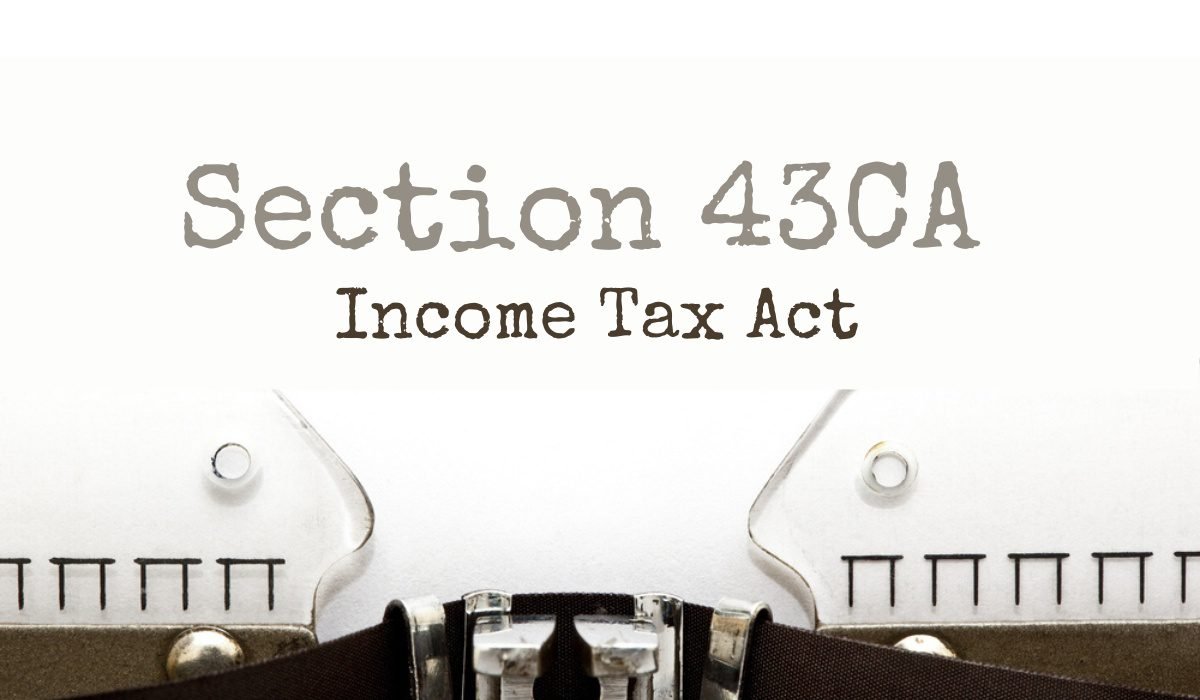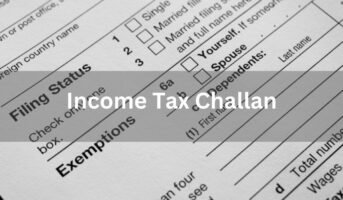The Finance Act, 2002, introduced Section 50C with effect from April 1, 2003. This section was applicable for computing capital gains in real estate transactions in the hands of seller of such land, or building, or both. The income generated is taxed under the capital gains. For tax calculation, the stamp duty value of a property or land is understood to be the consideration value of an asset.
However, this section covers only those transactions where the seller held the land or building or both as a capital asset, and not as a stock-in-trade.
To cover transfer of land or building or both, which are stock-in-trade, Section 43CA was later introduced by the Finance Act, 2013. It became applicable for transactions pertaining to FY2014 onwards. On such a transaction, income tax is imposed under the tax on business income.
What is Section 43CA?
From assessment year 2014-15, Section 43CA was introduced in India’s Income Tax Act to tax transfer of land or buildings held as stock-in-trade. To estimate the value of the transaction and tax it accordingly, the section provides the use of the stamp duty valuation method. In cases where the actual value of the transaction is more or less than the value arrived at by stamp duty valuation method, the latter will be deemed to be the actual value for tax calculation.
Conditions precedent
- There must be an assessee.
- There is a transfer by the assessee.
- The transfer is of an asset as defined in the section.
- There is consideration received on such transfer.
- The value adopted, or assessed, or assessable by any authority of a state government (stamp duty value) for the purpose of payment of stamp duty with respect to such transfer is greater than the consideration.
Consequences
For computing profits and gains from transfer of such asset, the stamp duty value will be deemed to be full value of consideration received or accruing because of such transfer.
Exception
- The asset is a capital asset of the assessee.
- Where the date of agreement of sale and the date of registration of transfer are not the same, the stamp duty value on the date of agreement will be taken in place of the stamp duty value on the date of registration, provided other conditions are satisfied.
What type of taxpayers are covered under Section 43CA?
This section is applicable to all types of taxpayers, including individuals, Hindu Undivided Families, company, business, etc.
What type of asset sale comes under Section 43CA?
Land or buildings that are not a capital asset fall under the purview of Section 43CA. This could include apartments, flats, warehouses, villas, or land.
Threshold applicability
The section says no adjustments can be made when the variation between the stamp duty value and the actual value is not more than 10% of the sale consideration. However, if the stamp duty value does not exceed 110% of the actual consideration, the actual money received would be considered for tax calculation.
| Money received | Stamp duty value | 110% of money received | Value of transaction under Section 43CA |
| Rs 1 Lakh | Rs 1 Lakh 5 thousand | Rs 1 Lakh 10 thousand | Rs 1 Lakh |
| Rs 1 Lakh | Rs 1 Lakh 15 thousand | Rs 1 Lakh 10 thousand | Rs 1 Lakh 15 thousand |
| Rs 1 Lakh | Rs 95 thousand | Rs 1 Lakh 10 thousand | Rs 1 Lakh |
| Rs 95 thousand | Rs 1 Lakh | Rs 1 Lakh 4.5 thousand | Rs 95 thousand |
| Rs 80 thousand | Rs 1 Lakh | Rs 88 thousand | Rs 1 Lakh |
Extension of safe harbour rules from 10% to 20%
Up to 2018, Section 43CA provided for deeming of the stamp duty value (circle rate) as sale consideration for transfer of real-estate inventory in case the circle rate exceeded the declared consideration. Consequentially, the stamp duty value was deemed as purchase consideration in case of buyer under Section 56(2)(x) of the act.
To provide relief to real estate developers and buyers, the Finance Act, 2018, provided a safe harbour of 5%. Accordingly, these deeming provisions triggered only where the difference between the sale/purchase consideration and the circle rate was more than 5%. To provide further relief in this matter, the Finance Act, 2020 increased this safe harbour from 5% to 10%. Therefore, the circle rate is deemed to be the sale/purchase consideration for real estate developers and buyers only where the variation between the agreement value and the circle rate is more than 10%.
To boost demand in the real estate sector and enable the real-estate developers to liquidate their unsold inventory at a rate substantially lower than the circle rate and giving benefits to homebuyers, it was decided to further increase the safe harbour from 10% to 20% under Section 43CA for the period from 12 November, 2020, to 30 June, 2021, with respect to primary sale of residential units of value up to Rs 2 Cr. Consequential, relief by increasing the safe harbour from 10% to 20% was also allowed to buyers of these residential units under Section 56(2)(x) of the act for the said period. Therefore, for these transactions, circle rate was deemed as sale/purchase consideration only if the variation between the agreement value and the circle rate is more than 20%.
FAQs
What is stock-in-trade?
Stock-in-trade is goods or equipment used to carry out a business. These may include goods, inventories, and merchandise maintained by a business for using them for processing or making saleable goods, or for selling the customers with an intention to make profit from such deals.
What is a capital asset?
A capital asset is an asset you own, including bonds, stocks, and property. The sale of a capital asset can result in capital gain or capital loss. While you must pay capital gain tax, losses can be used to reduce the tax amount. Capital assets include any kind of property, any securities held by a foreign institutional investor, jewellery, costly stones, and ornaments made of silver, gold, platinum or any other precious metal, paintings, drawings, sculptures, archaeological collections, or any artwork.
What is stamp duty valuation method?
States fix circle rates for properties below which they can’t be bought or sold. Even if they are bought or sold, these can’t be registered in government records. It is the value arrived at using circle rates, that is then used by the sub-registrar to calculate the stamp duty and registration fee on a transaction. The valuation thus arrived at is known as stamp duty valuation.
Under what head unsold flats that are in stock-in-trade taxed?
Unsold flats that are in stock-in-trade are assessed under the business income.
Does Section 43CA apply to under-construction flats?
Section 43CA apply or may not apply to a flat under-construction as the subject matter of transfer is not in existence.
What is the difference between Section 43CA and Section 50C?
The provisions of Section 50C apply to transfer of capital assets being land, or buildings, or both. The provisions of Section 43CA apply to transfer of an asset (other than capital asset) being land, or building, or both.
| Got any questions or point of view on our article? We would love to hear from you. Write to our Editor-in-Chief Jhumur Ghosh at [email protected] |

An alumna of the Indian Institute of Mass Communication, Dhenkanal, Sunita Mishra brings over 16 years of expertise to the fields of legal matters, financial insights, and property market trends. Recognised for her ability to elucidate complex topics, her articles serve as a go-to resource for home buyers navigating intricate subjects. Through her extensive career, she has been associated with esteemed organisations like the Financial Express, Hindustan Times, Network18, All India Radio, and Business Standard.
In addition to her professional accomplishments, Sunita holds an MA degree in Sanskrit, with a specialisation in Indian Philosophy, from Delhi University. Outside of her work schedule, she likes to unwind by practising Yoga, and pursues her passion for travel.
[email protected]











